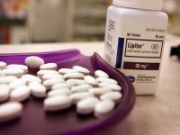Methods to Manage Statin Intolerance
A recent article examines the factors that influence a clinician's decision to continue a statin-intolerant patient on statin therapy when the benefits potentially outweigh the risks.

For nearly 25 years, statins have been proven to reduce cardiovascular death and other events in high-risk patients with relatively few major side effects. Now, the new American Heart Association (AHA)/American College of Cardiology (ACC) cholesterol guidelines may increase the number of patients taking statins, making the drug’s usage and efficacy even more important.
In the June 2014 edition of Best Practice & Research Clinical Endocrinology & Metabolism, researchers from the University of Chicago School of Medicine released a review of statins’ toxicities and side effects, as well as emphasized the importance of managing the approximately 10% of patients who develop an intolerance to statin therapy over time. The article also examined the factors that influence a clinician’s decision to continue a statin-intolerant patient on statin therapy when the benefits potentially outweigh the risks.
Although the most common side effects from statin use involve the muscles, a very small percentage consist of severe myopathy or rhabdomyolysis. The review authors assessed various risk factors associated with myopathy — such as significant comorbidities, a history of prior statin intolerance, and being aged older than 75 — to help predict which patients are likely to be statin-intolerant. They noted that history of hemorrhagic stroke and Asian ancestry are also considerations when initiating high-intensity statins.
As a result of their research, the authors reported that, as long as the prescriber monitors the patient carefully, statin use should never be avoided due to potential myopathy in any high-risk patient. Strategies to manage statin-intolerant patients include intermittent rosuvastatin dosing, changing statins, and adding other lipid-lowering agents to augment a lower statin dose, though the authors noted there remains a need for clear understanding of statin dosing parameters, the nature of myopathy, and the drugs’ long-term benefits in high-risk patients.